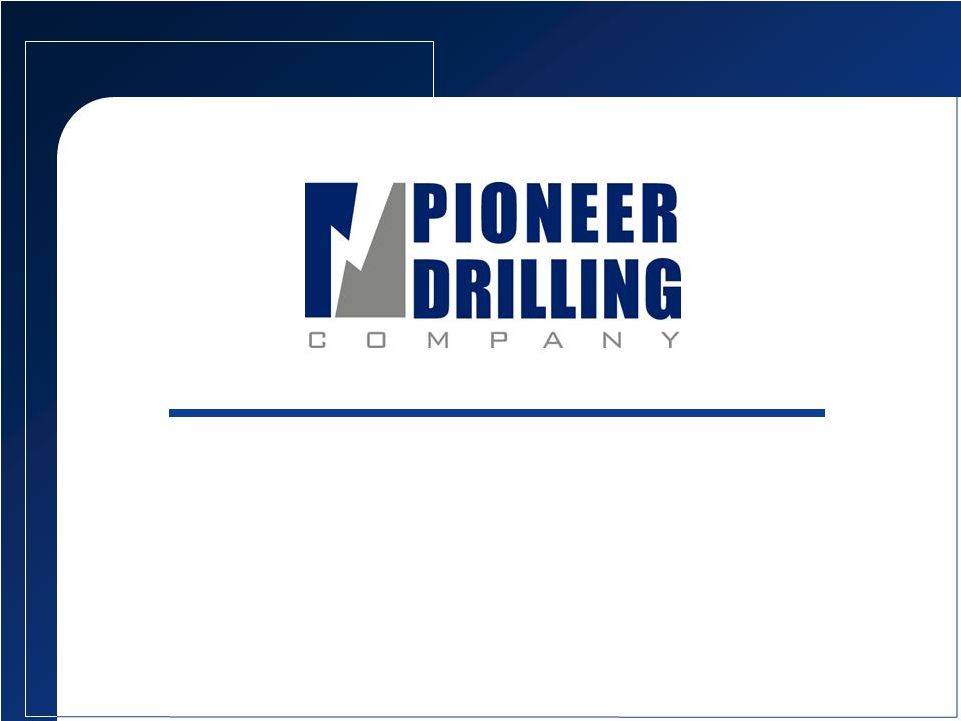 Stephens Fall Investment Conference November 16, 2010 (NYSE AMEX: PDC) www.pioneerdrlg.com Exhibit 99.1 |
 2 Forward-looking Statements This presentation contains various forward-looking statements and information that are based on management’s current expectations and assumptions about future events. Forward-looking statements are generally accompanied by words such as “estimate,” “project,” “predict,” “expect,” “anticipate,” “plan,” “intend,” “seek,” “will,” “should,” “goal,” and other words that convey the uncertainty of future events and outcomes. Forward-looking information includes , among other matters, statements regarding the Company’s anticipated growth, quality of assets, rig utilization rate, capital spending by oil and gas companies, production rates, the Company's growth strategy, and the Company's international operations. Although the Company believes that the expectations and assumptions reflected in such forward-looking statements are reasonable, it can give no assurance that such expectations and assumptions will prove to have been correct. Such statements are subject to certain risks, uncertainties and assumptions, including, among others: general and regional economic conditions and industry trends; the continued strength of the contract land drilling industry in the geographic areas where the Company operates; decisions about onshore exploration and development projects to be made by oil and gas companies; the highly competitive nature of the contract land drilling business; the Company’s future financial performance, including availability, terms and deployment of capital; the continued availability of qualified personnel; changes in governmental regulations, including those relating to the environment; the political, economic and other uncertainties encountered in the Company's international operations and other risks, contingencies and uncertainties, most of which are difficult to predict and many of which are beyond our control. Should one or more of these risks, contingencies or uncertainties materialize, or should underlying assumptions prove incorrect, actual results may vary materially from those expected. Many of these factors have been discussed in more detail in the Company's annual report on Form 10-K for the fiscal year ended December 31, 2009 and Form 10-Q for the three months ended, March 31, 2010 and September 30, 2010. Unpredictable or unknown factors that the Company has not discussed in this presentation or in its filings with the Securities and Exchange Commission could also have material adverse effects on actual results of matters that are the subject of the forward-looking statements. All forward-looking statements speak only as the date on which they are made and the Company undertakes no duty to update or revise any forward-looking statements. We advise our shareholders to use caution and common sense when considering our forward looking statements. |
 Overview Ticker Symbol: PDC Market Cap: $374 million (November 11, 2010) Stock price: $6.91 (November 11, 2010) Average 3-month daily trading volume: 452,000 shares Public float: Approximately 54 million shares Employees: 2,444 Headquarters: San Antonio, Texas 3 |
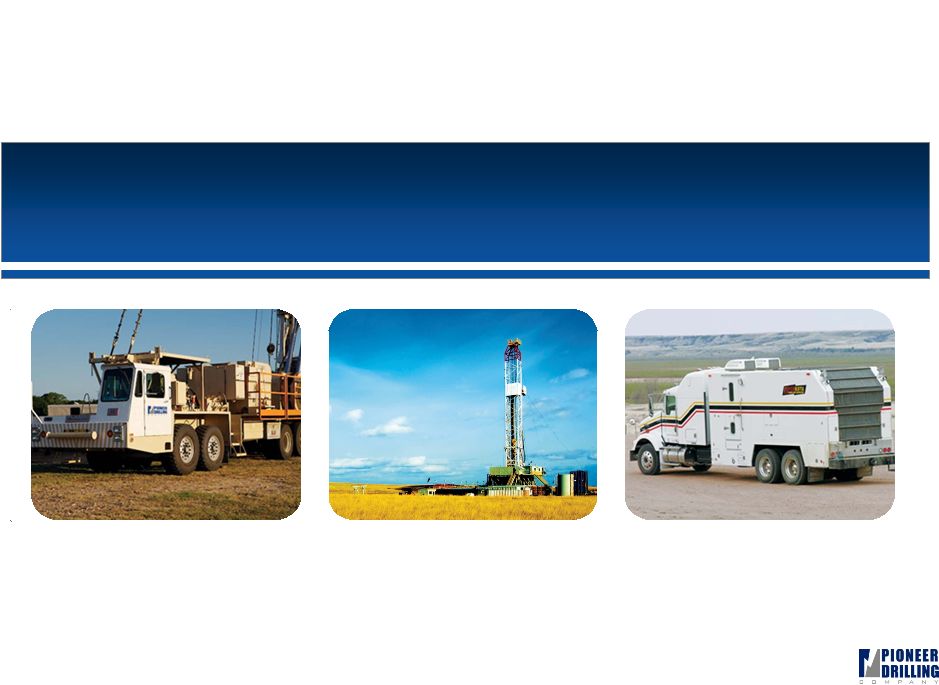 4 Pioneer Drilling Overview |
 Investment Considerations Rig fleet trading at a significant discount to replacement value Focused on protecting cash flow from natural gas price uncertainty Approximately 70% of working rigs on term contracts (1) Approximately 60% of working rigs in shale plays (1) Approximately 60% of our working drilling rigs and workover rigs are operating on wells targeting oil (1) Recent bond offering combined with credit facility provides ample flexibility and liquidity Continued growth opportunities in core businesses: land drilling, well services and wireline 5 (1) Based on information provided in 3rd quarter 2010 conference call; company research as of November 4, 2010 |
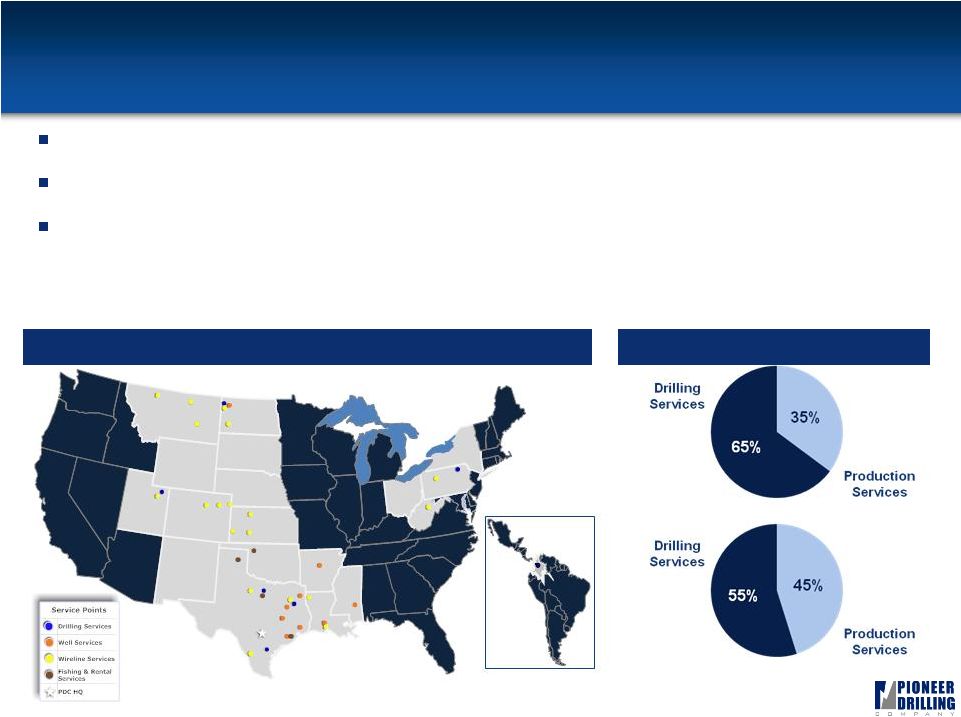 6 Overview of Pioneer 71 land drilling rigs (approximately 9 largest contract driller) 74 well service rigs (approximately 6 largest well service provider) 82 wireline units (65 cased hole, 17 open hole) Diversified Energy Services Provider TTM September 30, 2010 Total Revenue: $420 million Total Segment Margin: $125 million 6 Colombia th th |
 Corporate Strategy Focused on value-added organic growth in core businesses: land drilling, well services and wireline Maintaining emphasis on new-build equipment and state-of-the-art technology Continuing to pursue further international expansion Maintain leadership position in accident-free work environment 7 |
 Recent Developments 8 Locking in drilling rig utilization with term contracts Increased term contracts from 4 to 32 since beginning of year, including All seven rigs drilling in the Marcellus, Eight rigs drilling in Bakken, Six rigs drilling in Eagle Ford, One rig drilling in South Texas, Two rigs drilling in Uintah Basin, and All eight rigs drilling in Colombia |
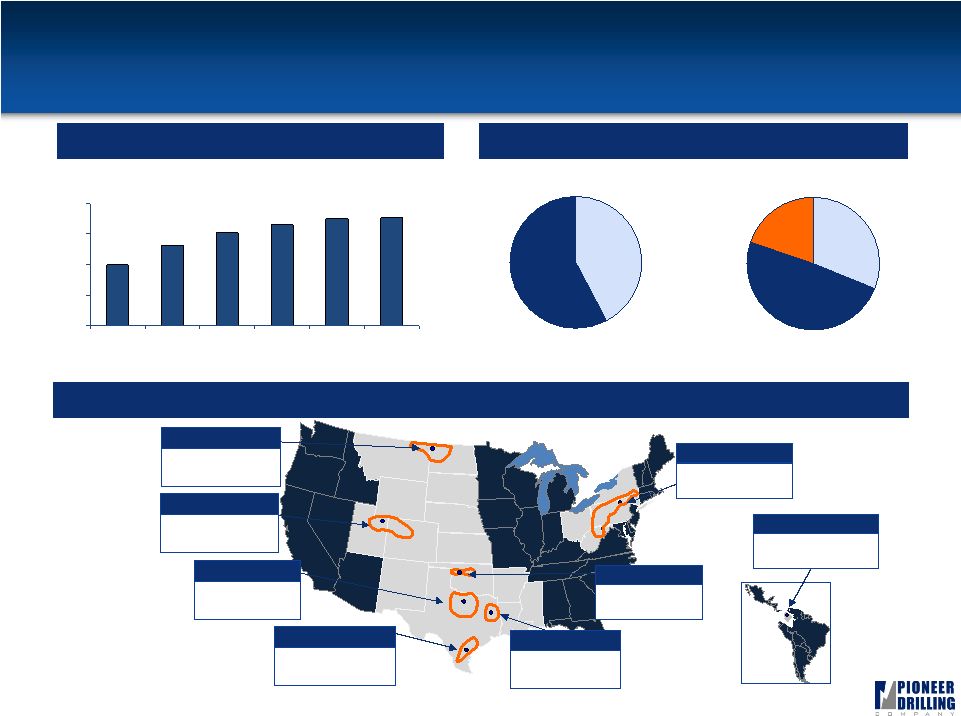 Drilling Services-Segment Overview 9 Historical Fleet Growth Locations Current Rig Fleet Mix Note: Rig counts for 2004, 2005 and 2006 represent fiscal years ended March 31, 2004, 2005 and 2006 while 2007, 2008 and 2009 represent fiscal years ended December 31, 2007, 2008 and 2009. * Cold-stacked 19 rigs Avg HP: 1,084 South Texas 16 rigs Avg HP: 931 East Texas 58% 42% 49% 31% 20% Electric Mechanical 550-999 HP 1,000-1,499 HP 1,500-2,000 HP 9 rigs Avg HP: 1,222 North Dakota 3 rigs Avg HP: 850 North Texas 3 rigs Avg HP: 1000 Utah 7 rigs Avg HP: 1,000 Appalachia 8 rigs Avg HP: 1,375 Colombia 6 rigs Avg HP: 600 Oklahoma* 40 52 61 66 70 71 0 20 40 60 80 2004 2005 2006 2007 2008 2009 |
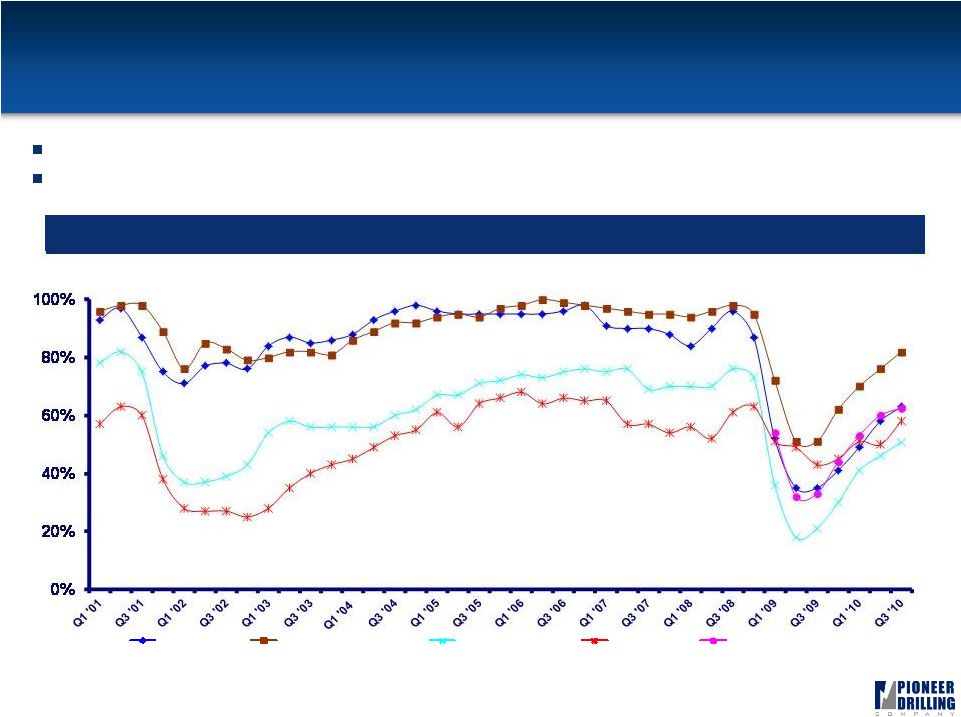 10 Strong Utilization Through the Cycles Averaged 85% utilization through cycles since 2001, comparing favorably to peers Utilization has rebounded from a monthly low of 33% in June 2009 to 63% currently (1) Comparable Utilization Rates Pioneer Helmerich & Payne Patterson-UTI Nabors Precision (U.S.) Source: Helmerich & Payne, Patterson-UTI, & Precision Drilling data consists of U.S. domestic utilization rates derived from Form 10-K, Form 10-Q reports, & press releases. Nabors utilization rates for worldwide land fleet obtained from public documents and industry analysts. Helmerich & Payne Q3 2010 only estimated based on analyst reports. Pioneer Drilling utilization rates include Colombian operations beginning Q3 2007. (1) PDC utilization for Q3 2010. |
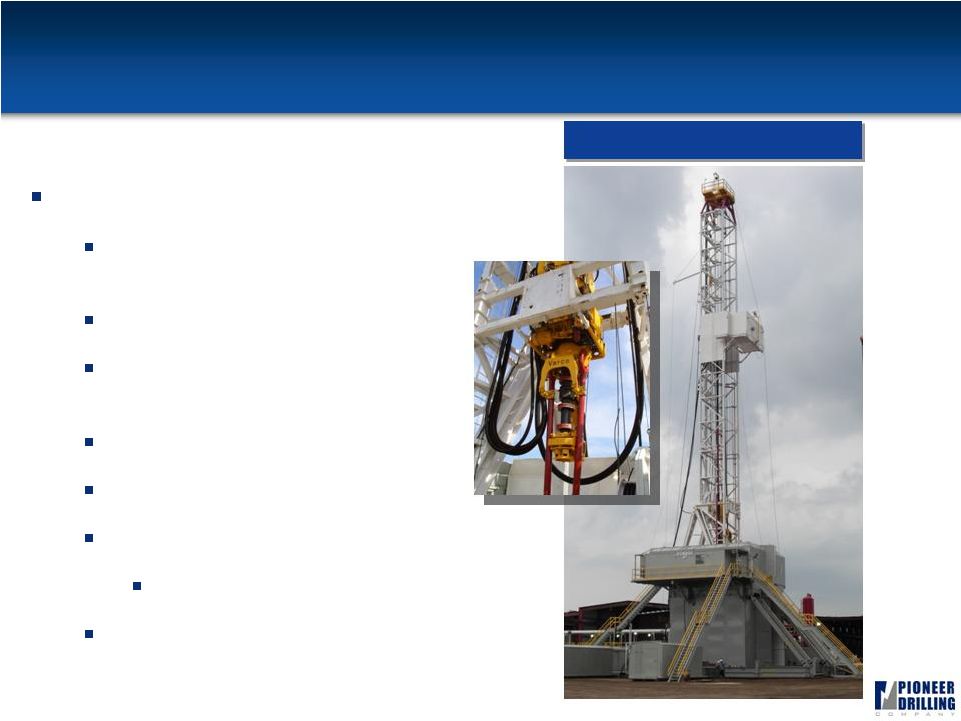 11 Modern, Efficient Drilling Fleet Over 75% of fleet is shale capable 31 new builds (44%) since 2001 with most constructed during 2004 - 2006 69% with 1,000 HP - 2,000 HP 35 rigs working with top drives (49% of fleet) 63% with iron roughnecks 42% electric 12 walking/skidding systems on rigs 3 more installed in Q4 33 pairs of 1300/1600 HP mud pumps 50 Series Rig |
 60 Series Rig 12 Mast Traveling Equipment Mud Tanks Handling Equipment Drawworks Mud Pumps Mud Cleaning Equipment Pipe Racks Accumulator Gas Buster Choke Manifold SCR House Fuel-Water Tank Power Package Suitcases |
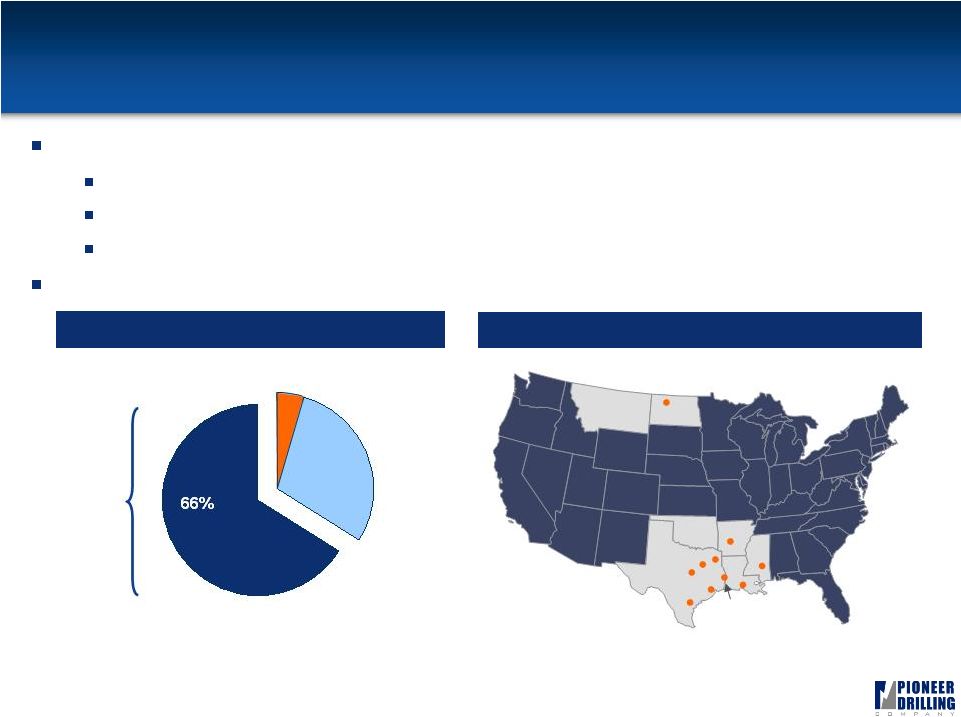 Well Service Fleet Overview 13 One of the newest and most highly capable well service fleets in the industry Sixty-nine 550 HP rigs Four 600 HP rigs One 400 HP rig Established in the Bakken, Fayetteville, Haynesville and Eagle Ford shales Well Service Fleet Age Well Service Locations Average year in service: 2007 66% 2007 or newer 31% 3% Williston Bryan Palestine Longview New Iberia El Campo Liberty Kenedy Conway Laurel 2005-2006 2002-2004 |
 Wireline and Fishing & Rental Overview 14 Wireline Services Open and cased-hole wireline services 82 wireline units with an average age of less than 5 years Established in the Bakken, Barnett, Marcellus, Haynesville, Niobrara and Eagle Ford shales Fishing & Rental Services Range of specialized services and equipment that are utilized on a non- routine basis for both drilling and well servicing operations Overview Locations Williston Dickinson Cut Bank Billings Havre Tyler Bossier City Broussard Graham Alvarado Roosevelt Pratt Liberal Hays Casper Buckhannon Punxsutawney Ft. Morgan Brighton Wray Woodward Pampa Springtown El Campo Wireline Fishing & Rental Laredo |
 15 Industry and Market Conditions |
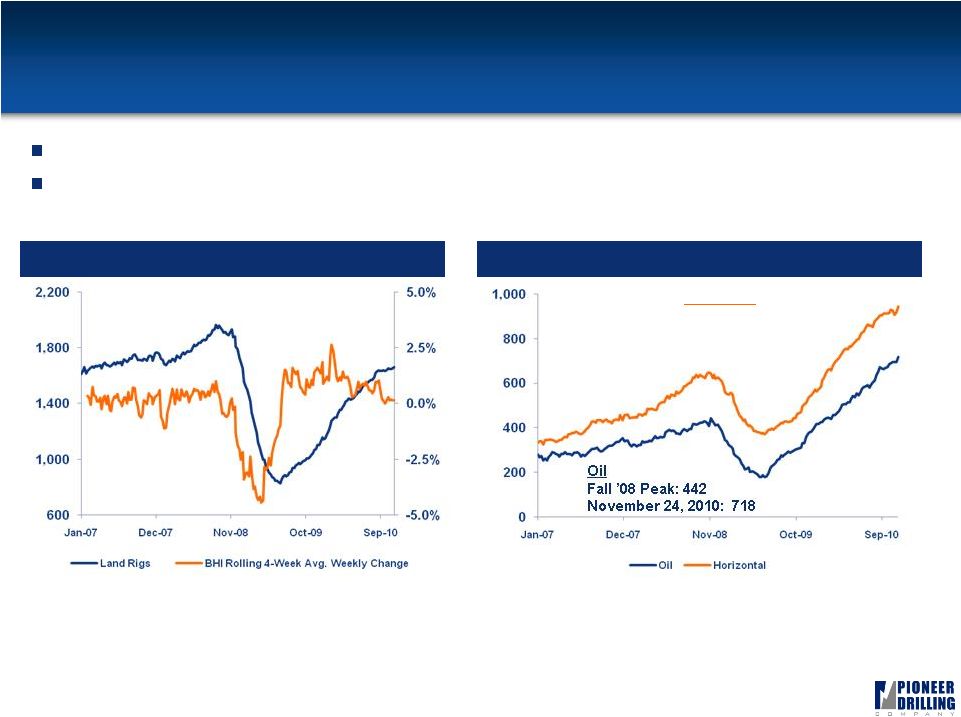 Recovery in U.S. Land Rig Count 1 16 Steady rig count improvement during the second half of 2009 and 2010 YTD Horizontal and oil rig counts have surpassed Fall 2008 peak levels Land Rig Count Horizontal & Oil Rig Count Source: Baker Hughes. Source: Baker Hughes. Horizontal Fall ’08 Peak: 650 November 5, 2010: 943 16 |
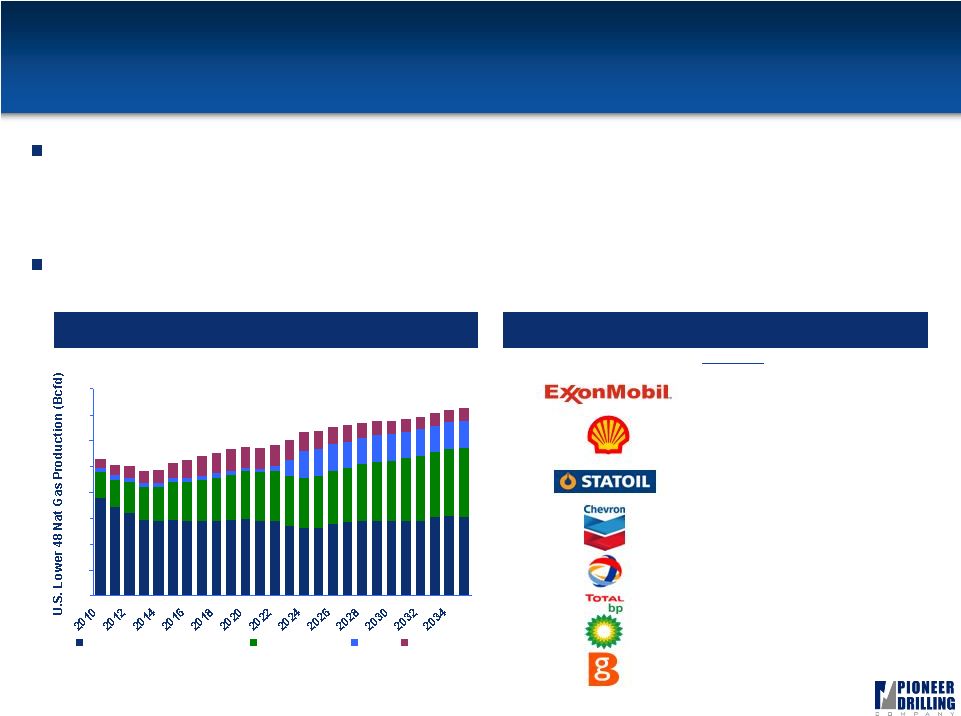 30 35 40 45 50 55 60 65 70 Base Production (all sources) Unconventional Alaska LNG imports Benefits of Growing Shale Plays 1 17 Oilfield service companies stand to benefit from shale production due to its lower risk development and increased service intensity (up to 3 - 5x conventional) Reintroduction of the Majors in the U.S. market should result in greater activity levels Recent U.S. Shale Investments Source: Base production, Alaska, and LNG import data – EIA AEO 2010. Growing Importance of Shale $Millions $40,991 12/14/2009 $4,700 5/28/2010 $3,375 11/11/2008 $3,200 11/9/2010 $2,250 12/30/2009 $1,900 9/2/2008 $1,050 6/30/2009 |
 Conclusion: Improving Oil Service Outlook 1 18 North American capital spending outlook much improved Upstream Spending Outlook Well Service / Workover Jobs Outlook Source: Spears & Associates. Source: Spears & Associates. 18 |
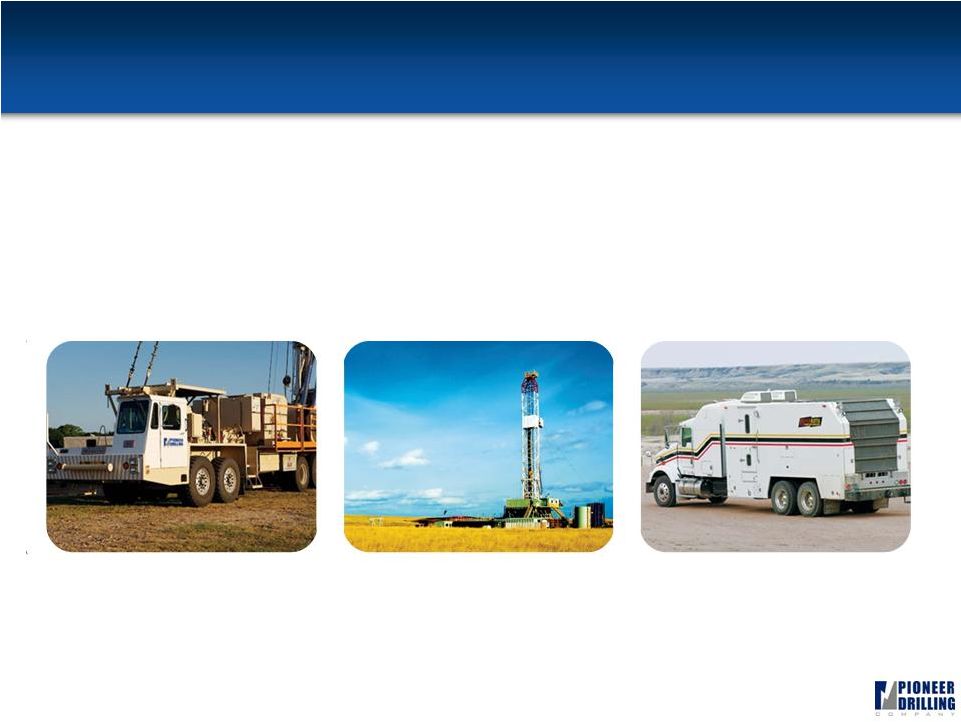 19 Financials |
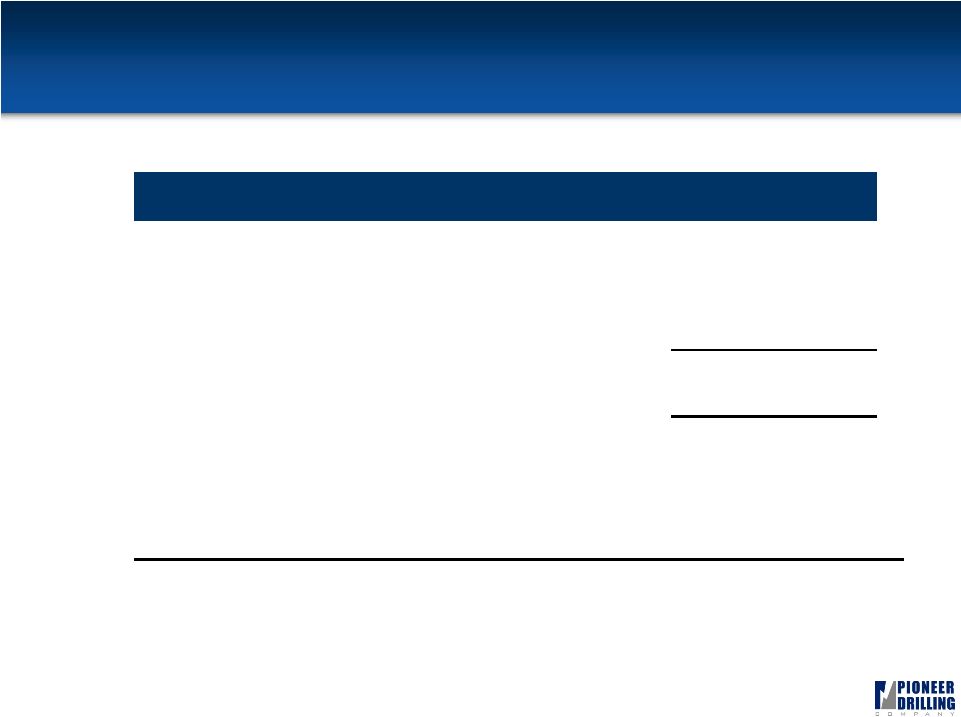 Capitalization 20 ($ in millions) September 30, 2010 Cash $ 16.9 Revolving Credit Facility ($225) (1) 39.8 Sr. Unsecured Notes 239.9 Other 3.3 Total Debt $ 283.0 Stockholders' Equity 398.6 Total Capitalization $ 681.6 LTM EBITDA $ 79.5 Debt / LTM EBITDA (2) 3.44x Debt / Total Book Capitalization 41.5% (1) Excludes $9.2 million of LCs outstanding. (2) Total consolidated leverage ratio as reported in form 10Q for the third quarter 2010. |
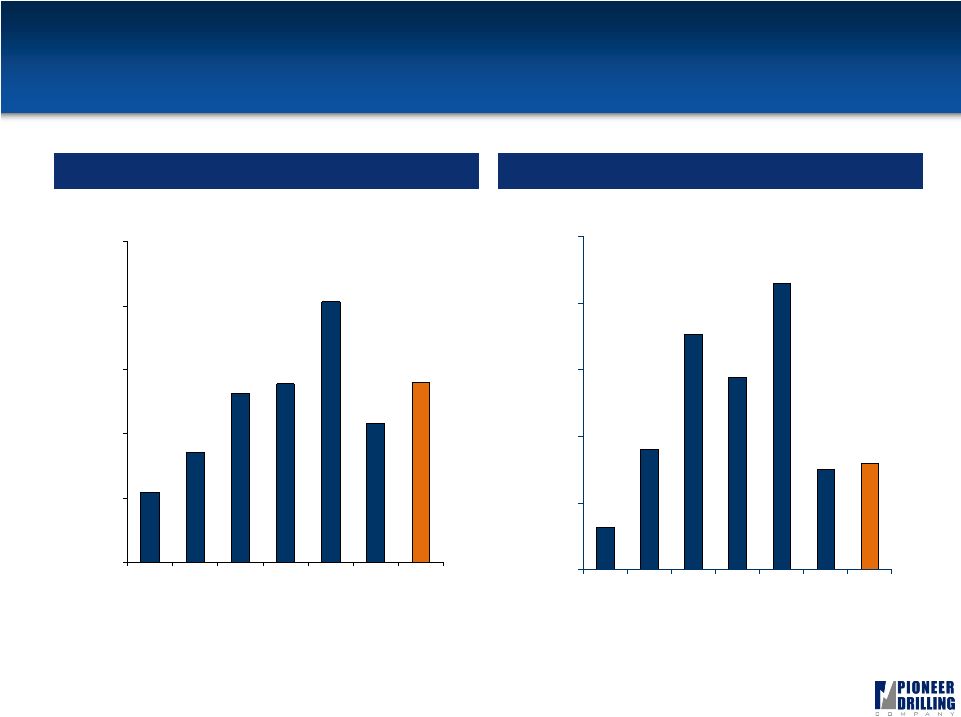 21 $163 $257 $396 $417 $610 $326 $420 $0 $150 $300 $450 $600 $750 2004 2005 2006 2007 2008 2009 TTM $32 $90 $177 $145 $215 $75 $80 $0 $50 $100 $150 $200 $250 2004 2005 2006 2007 2008 2009 TTM Consolidated Revenue & EBITDA Revenue ($ millions) EBITDA ($ millions) (1) (1) Note: Fiscal year end was changed from March 31 to December 31 effective on December 31, 2007; all data points reflect calendar year and trailing twelve months information derived from 10K and 10Q filings. (1) As of September 30, 2010. |
 Capital Expenditures 22 |
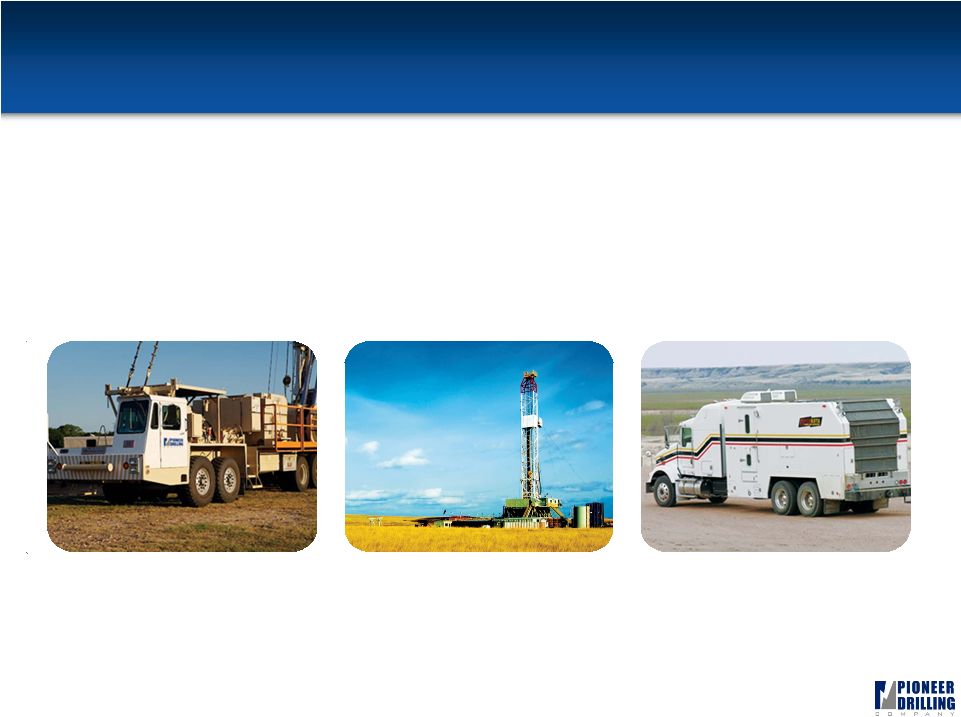 23 Appendix |
 24 Reconciliation of EBITDA to Net Income Year ended December 31, ($ in millions) 2004 2005 2006 2007 2008 2009 EBITDA 31.7 90.3 176.6 144.5 214.8 74.9 Depreciation & Amortization (20.6) (30.8) (47.6) (63.6) (88.1) (106.2) Net Interest (1.9) 0.8 3.6 3.3 (11.8) (8.9) Impairment Expense - - - - (171.5) - Income Tax (Expense) Benefit (3.4) (22.1) (47.7) (27.3) (6.1) 17.0 Net Income (Loss) 5.7 38.1 84.8 56.9 (62.7) (23.2) TTM ($ in millions) Q4 2009 Q1 2010 Q2 2010 Q3 2010 TTM EBITDA 14.1 9.2 22.0 34.2 79.5 Depreciation & Amortization (27.7) (28.9) (29.6) (30.8) (117.0) Net Interest (3.6) (4.1) (7.1) (7.6) (22.3) Impairment Expense - - - - - Income Tax (Expense) Benefit 8.8 9.2 4.5 1.6 24.1 Net Income (Loss) (8.4) (14.5) (10.1) (2.6) (35.7) We define EBITDA as earnings (loss) before interest income (expense), taxes, depreciation, amortization and impairments. Although not prescribed under GAAP, we believe the presentation of EBITDA is relevant and useful because it helps our investors understand our operating performance and makes it easier to compare our results with those of other companies that have different financing, capital or tax structures. EBITDA should not be considered in isolation from or as a substitute for net earnings (loss) as an indication of operating performance or cash flows from operating activities or as a measure of liquidity. A reconciliation of net earnings (loss) to EBITDA is included in the table below. EBITDA, as we calculate it, may not be comparable to EBITDA measures reported by other companies. In addition, EBITDA does not represent funds available for discretionary use. |
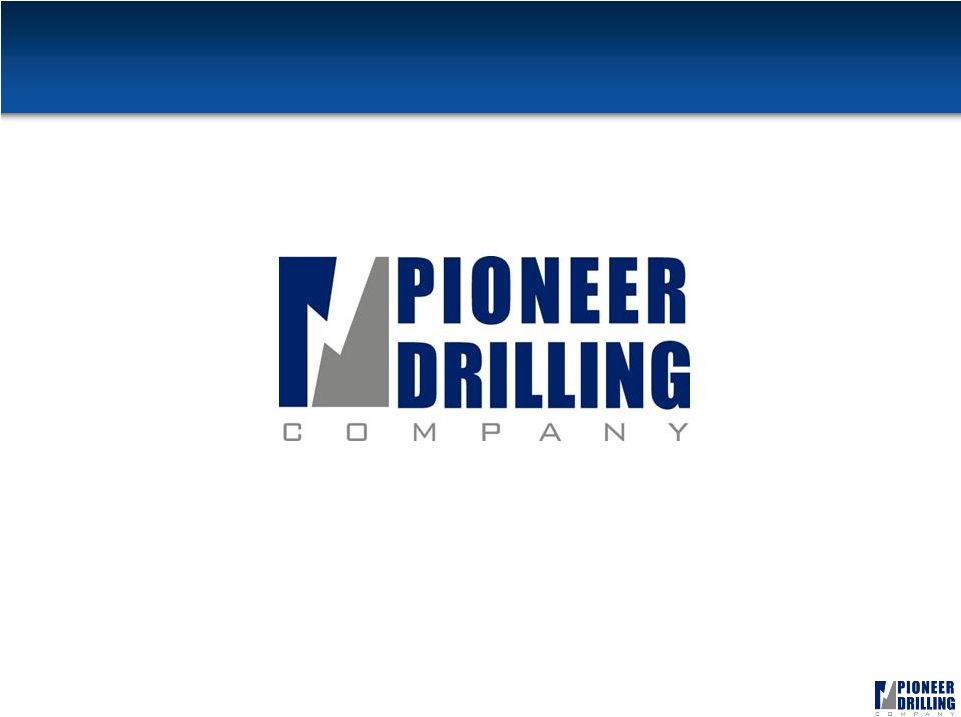 25 |